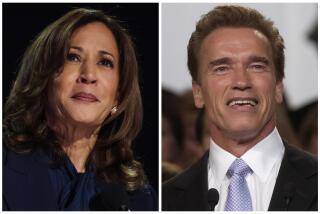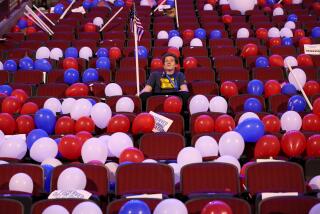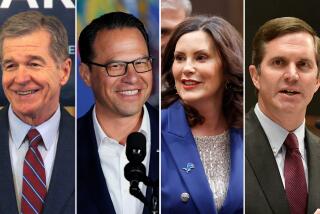Note to Democrats pondering a presidential run: The clock is already ticking
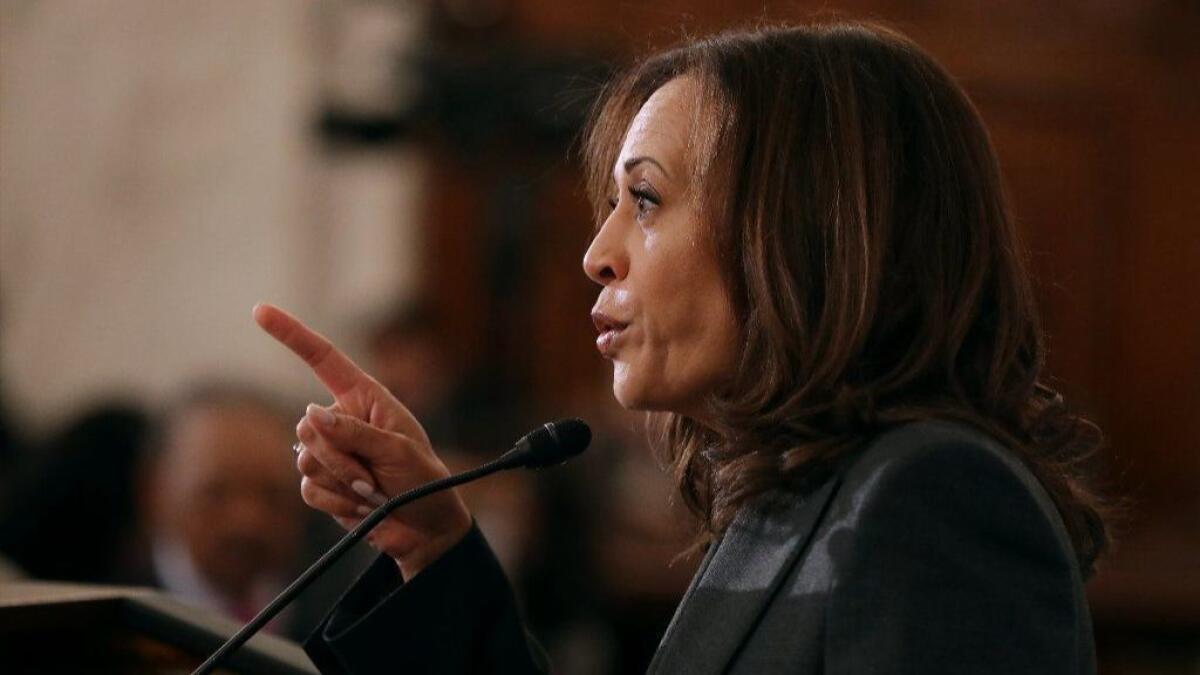
- Share via
Reporting from Washington — The presidential campaign clock may be ticking, but Bernie Sanders insists it doesn’t rattle him.
“I am here in northern Vermont, and people just went through six months of an election, and they are not all that happy to get into another election,” the newly reelected Vermont senator said in his characteristically brusque manner when asked about deciding on a presidential bid.
“The media has pushed this country into never-ending campaigns. We can all take a deep breath.”
That unworried attitude belies the intense pressure on Sanders and the rest of the horde of potential Democratic contenders to move swiftly. Privately, some of Sanders advisors have warned him that holding his fire much longer than a few weeks into the New Year could prove fatal to a 2020 bid.
At no time in recent history have Democrats forged into a presidential primary with a field of viable candidates so large and the outlook for their individual prospects so muddled. President Trump’s rewrite of the rules of political engagement has spilled into the contest among his rivals. Candidates who wait for a clear path could find themselves knocked aside before they take their first steps.
“No one seems to have a clean field here,” said Jim Jordan, who managed the presidential campaign of 2004 Democratic nominee John F. Kerry.
“There are multiple Californians, multiple New Yorkers, multiple Massachusettsans, multiple African Americans, lots and lots of women. The pie is going to get carved up quickly into small slices.”
Building a campaign is complicated business, he and others warn. The pool of top-shelf operatives, well-connected fundraisers and activists in early voting states will get spread thin very quickly in a year when more than 20 notable candidates could realistically jump in.
Already, in addition to Sanders, Sens. Kamala Harris of California, Elizabeth Warren of Massachusetts, Cory Booker of New Jersey, Kirsten Gillibrand of New York and Amy Klobuchar of Minnesota have all taken steps toward a possible presidential bid.
Former Vice President Joe Biden has been calling seasoned operatives seeking assurances from them that they will be on board if he runs — and that they won’t take jobs with another candidate without checking with him first. While aides declined to discuss Harris’s timing, her previous campaigns suggest that if she formally enters the race, as seems increasingly likely, she will do so on the earlier side rather than waiting.
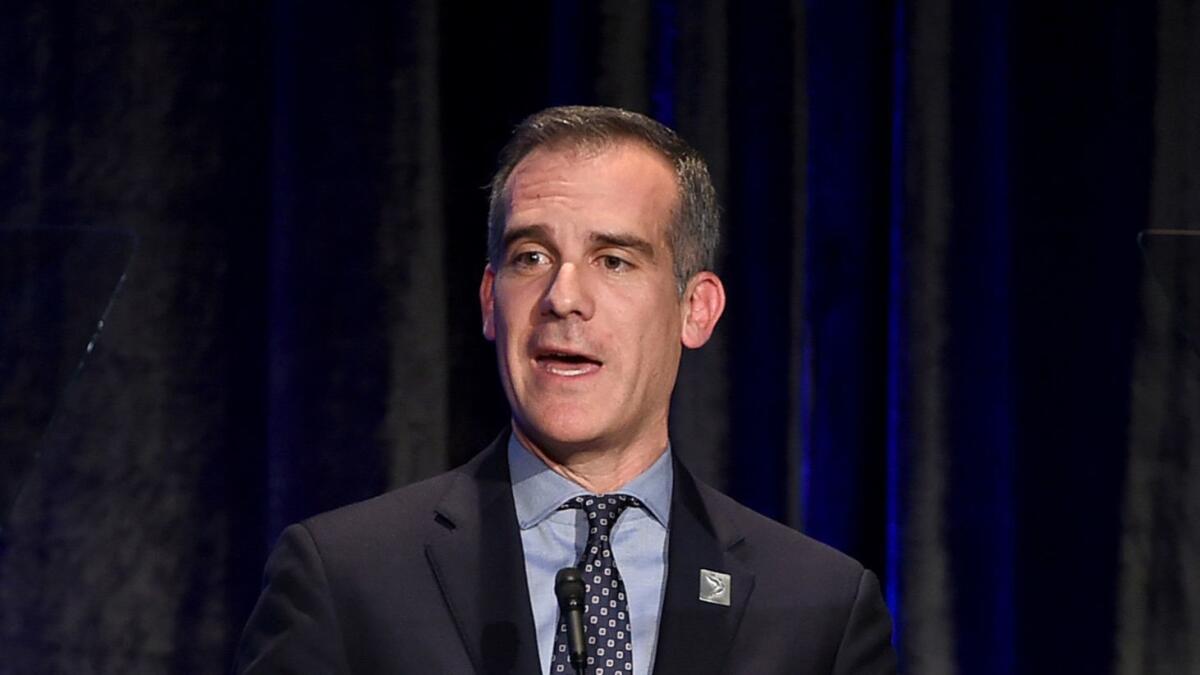
Los Angeles Mayor Eric Garcetti, who has been strategically visiting early primary states and taken on advisors with presidential campaign experience, plans to make up his mind by the end of the year.
Sen. Sherrod Brown of Ohio told local media after his successful reelection Tuesday that he’ll be working through the possibility of a presidential bid with his family over the holidays.
Gillibrand vowed only weeks ago, during her reelection campaign, that she would serve her full six-year Senate term. She waited just two days after the election to pivot away from that, sending a clear signal to party activists and donors not to shop elsewhere when she told late-night host Stephen Colbert that she was weighing a White House bid.
Govs. Steve Bullock of Montana and John Hickenlooper of Colorado have been touting the benefits of a western governor as the party’s nominee. Former New Orleans Mayor Mitch Landrieu has joined Garcetti in talking up the benefits of a mayor.
Another former mayor, Michael Bloomberg of New York, spent tens of millions to help elect Democrats in the midterm elections. So did California-based billionaire Tom Steyer.
Julian Castro, the Obama administration’s secretary of Housing and Urban Development has been eyeing an early announcement. Another Obama friend, former Massachusetts Gov. Deval Patrick, also has been considering the race.
The hesitance of any of the party’s factions to coalesce around a candidate so far heightens potential for an outside-the-box alternative like Texas Rep. Beto O’Rourke to quickly become a runaway star, as Sanders did in 2016.
And the list goes on. Knowledgeable operatives project a flurry of announcements early into winter.
“This is one of these rare situations in politics where he or she who hesitates is going to be lost,” said Jordan.
Most serious candidates will have entered the race by February — a big shift from the last Democratic presidential primary, when the race didn’t get underway in earnest until Hillary Clinton released an announcement video in mid-April of 2015. Her campaign lumbered along from there, with infrequent, highly scripted appearances that left many voters wanting.
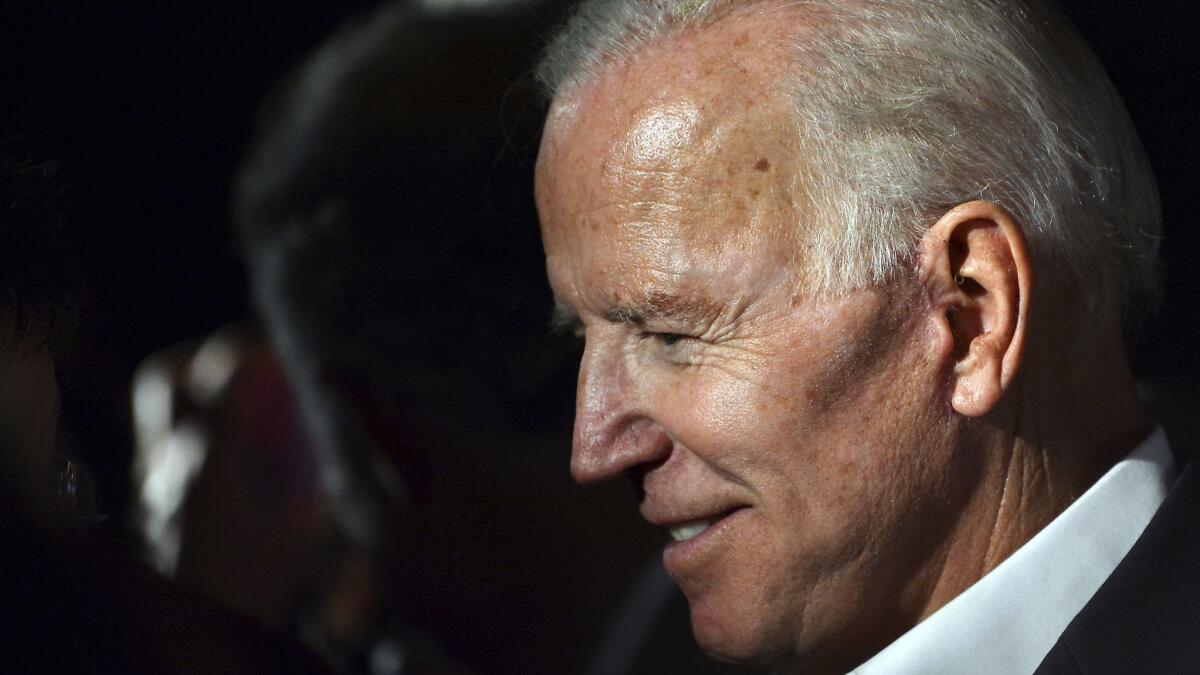
At Gonring, Spahn & Associates, a public affairs consulting firm based in Los Angeles and Washington that has long advised big Hollywood donors, including Steven Spielberg and Jeffrey Katzenberg, the phone is already ringing steadily.
“In the last 24 hours, I’ve gotten three calls” from potential 2020 candidates, firm President Andy Spahn said Tuesday. “That tells me there is going to be a regular drumbeat for the next six to eight weeks.”
The unique dynamic of this year’s race has pushed the calendar up for everyone, said William Carrick, a veteran Democratic strategist who was campaign manager for Dick Gephardt in 1988 and is currently advising Garcetti.
“We’ve had full fields with multiple candidates before, but we have never had anything like this,” he said. “It’s like three times more than anything we have had before.”
Voters typically don’t grasp everything that goes on behind the scenes or how challenging it can be to build a durable campaign infrastructure when so many attractive candidates are vying for a relatively small pool of proven talent, he said. Decades-old loyalties are being tested as politicos with longtime relationships with multiple potential candidates are being lobbied by all of them.
At the same time, party activists have a yearning for new blood and ideas. That has many veteran campaign warriors and donors reconsidering whether to re-up with candidates whose political careers they have long nurtured.
“People are going to make judgments based on considerations other than I have known someone for a whole hell of a long time,” Carrick said. “There is a lot of talk about needing new faces.”
For now, many of the party’s big donors are still assessing the field.
“I am just going to wait and see,” said Susie Tompkins Buell, the San Francisco philanthropist and leading Democratic donor who gave more than $15 million to Bill and Hillary Clinton’s campaigns and helped raise untold millions more for them.
“This is such a serious matter now. You can’t just fall in love with somebody or sign on with them because you have a relationship. We have to keep an open mind and see what opportunities we have. We need the fluidity to see who everybody is objectively and analyze all the potential possibilities.”
The new fundraising possibilities unleashed by popular online platforms like ActBlue and social-media savvy campaign operatives do give candidates alternative paths to building war chests, and many of them will head into the race with big pots of cash as a result of their digital success.
But even in that arena, candidates playing coy could be at a disadvantage against those openly playing to win.
Not everyone who has been through the grueling process of a presidential run buys into the idea that moving fast is essential this cycle.
Former New Mexico Gov. Bill Richardson, who mounted an unsuccessful Democratic primary bid in 2008, is skeptical that the earliest voting states of Iowa and New Hampshire will hold the influence they have in the past, particularly now that California has moved its primary up to early March.
Relative newcomers to presidential politics hoping to be the fresh face would be better served focusing on California, South Carolina and possibly Nevada in a year when Democratic voters consumed with ousting Trump are particularly focused on electability, he said. The voting populations in those states are more diverse, and the latter two in particular are not dominated by the progressive wing of the party, and likely more reflective of the general electorate, he added.
And the deck there is not already stacked against newcomers in such states as it is in New Hampshire and Iowa, where candidates like Sanders and Warren already have built formidable campaign machines, Richardson said.
“There is a totally new landscape and new thinking,” he said. “The primary calendar has shifted so that it is not just New Hampshire and Iowa. It creates an advantage for lesser known candidates, and candidates from the West, and maybe even unknown candidates.”
But like so many other political veterans, Richardson is cautious about dispensing advice at a time none of the old rules of presidential politics seem to apply and the new ones have yet to be written.
“Of course, what do I know?” he said, recalling his fourth-place finish in Iowa and New Hampshire before dropping out of the 2008 race. “I lost.”
The latest look at the Trump administration and the rest of Washington »
More stories from Evan Halper »
[email protected] | Twitter: @evanhalper
More to Read
Get the L.A. Times Politics newsletter
Deeply reported insights into legislation, politics and policy from Sacramento, Washington and beyond. In your inbox three times per week.
You may occasionally receive promotional content from the Los Angeles Times.
